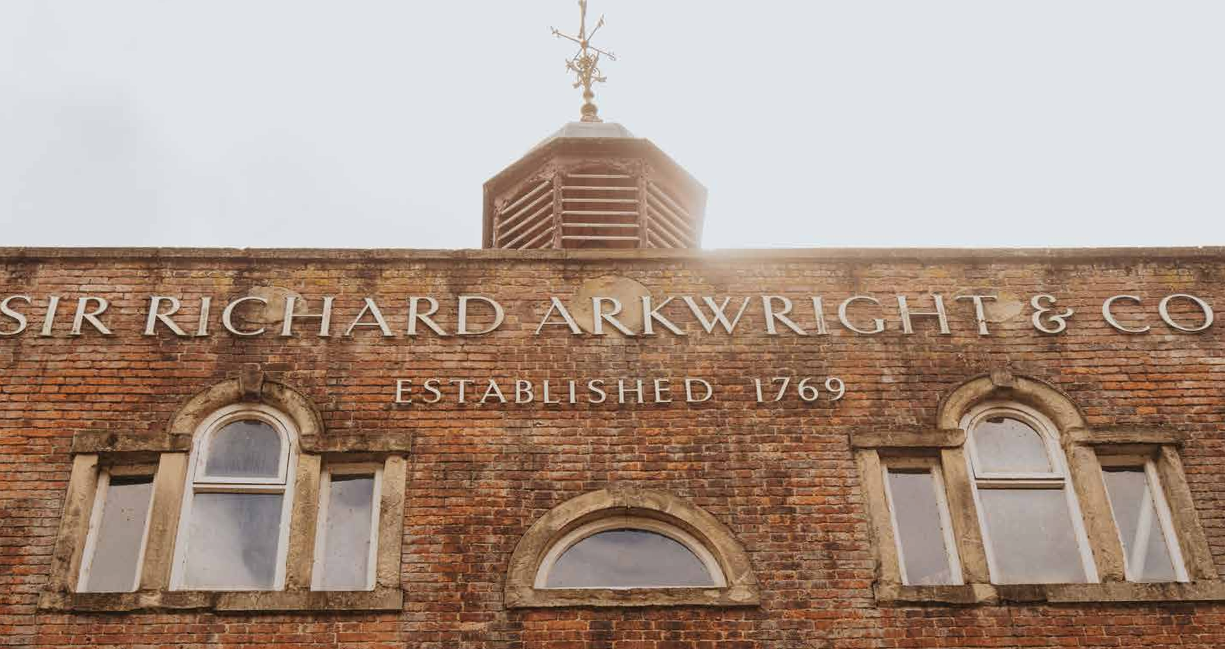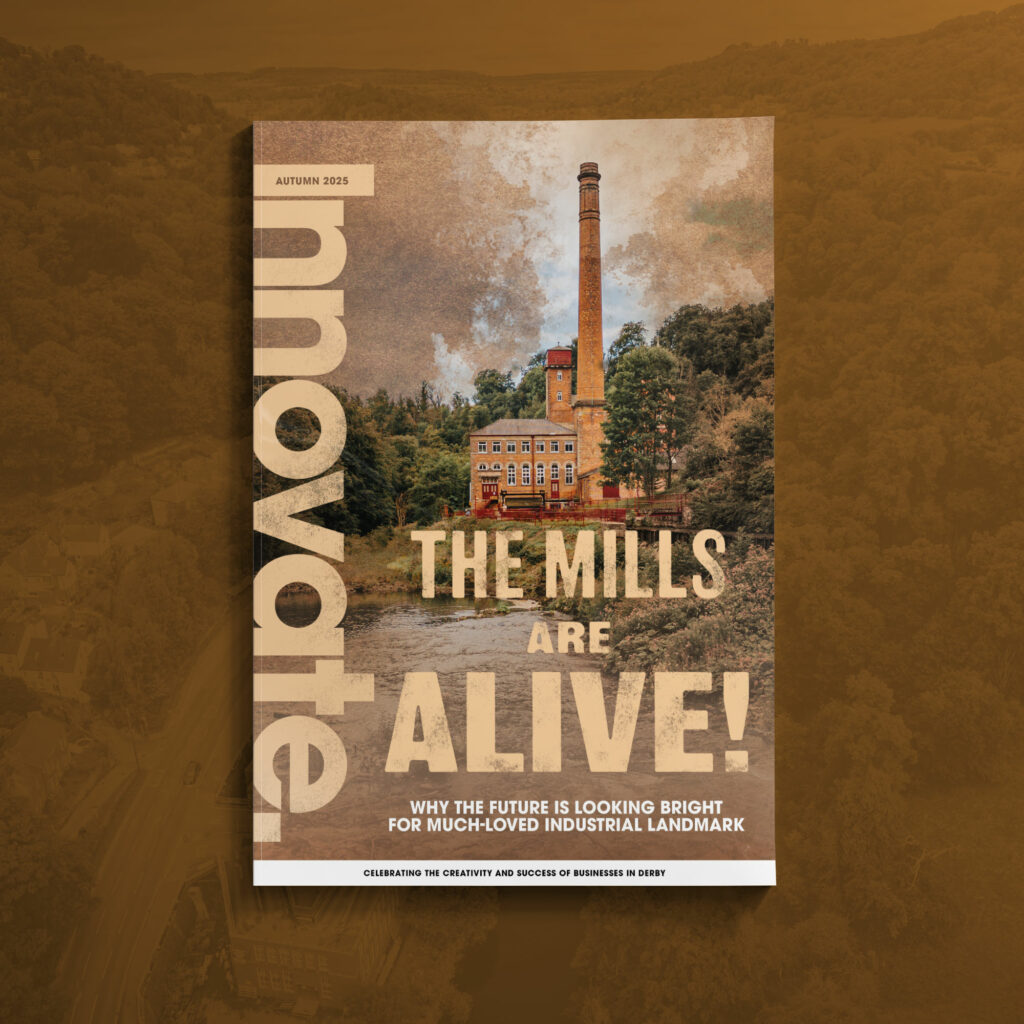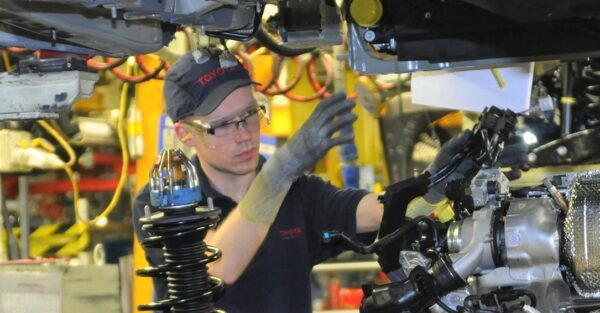Latest News | 24 September 2025
How new life is being brought to historic mills

In the latest edition of Marketing Derby’s Innovate Magazine, we find out how new life is being brought to Masson Mills, which were once industrialist Sir Richard Arkwright’s pride and joy.
On the west bank of the River Derwent, at Matlock Bath, Sir Richard, who is considered by many as the father of the industrial factory system, constructed Masson in 1783.

In its heyday, it was home to hundreds of workers spinning cotton. Today, as Innovate discovers, it is once again a thriving centre for enterprise – and a place which can be enjoyed by the public.
Once the world’s longest-running textile mill, it closed in 1991 as the work was off-shored.
Three years earlier, the building had been purchased by businessman and former history teacher Robert Aram, who had begun buying up mills during the mass closures of the 1980s.
Like Arkwright, he saw Masson as a jewel in the crown and moved machinery from his other mills to make the site a showpiece museum, which was opened in 1999 alongside a ‘shopping village’ operated by Edinburgh Woollen Mill.

When both ventures closed during the pandemic, current owner Derwent Hydroelectric Power (DHP) stepped in, keen to safeguard the historic structure.
The company had enjoyed a 30-year association with Masson, supporting the previous owner to generate electricity from the Derwent – enough to power nearly 300 homes.
While DHP intends to continue to generate electricity at Masson, it is also seeking tenants for space left vacant since closure of the shopping village.
In the meantime, there is still plenty of activity within what is one of Derbyshire’s best-known industrial landmarks and part of the UNESCO Derwent Valley Mills World Heritage Site.
The textile museum re-opened its doors in 2023, alongside a new visitor centre, and the Masson team plays host to conferences, events, business meetings, exhibitions and workshops

Business development assistant Caroline Bowler told Innovate: “People are blown away when they come through the doors and so surprised by the extent of what we have here, the knowledge of our guides and the fact that they can get to see the machinery in action.
“It’s such a privilege to play a part in enabling the public to enjoy the mills today whilst working to preserve them for future generations.”
To read the feature in full, click here.



